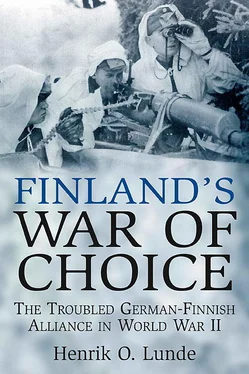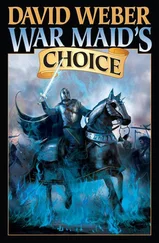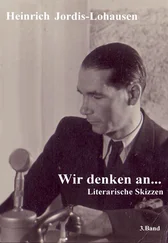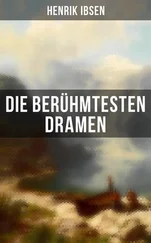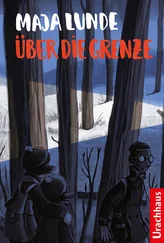There are a number of books by German participants written from the 1950s to the 1980s that have not been translated into English. Some are unit histories. There are also a number of books in Swedish and Norwegian, but again they have not been translated.
Two books by Finnish-Americans, John H. Wuorinen, and Leonard C. Lundin, deserve mention. They were written in 1948 and 1957 respectively.
The memoirs of Marshal Carl Gustaf Mannerheim, the Finnish commander in chief, were published in Swedish after his death in 1952, and in English in 1954. There are numerous discrepancies between what is contained in Mannerheim’s memories, noted throughout this book, and what appear in other sources. Marshal Mannerheim did not begin writing his memoirs until illness forced him to move to Switzerland for medical treatment—to the Valmont Sanatorium in Montreaux. His memoirs were written with the help of a number of generals and colonels headed by General Erik Heinrichs, his former chief of staff. Since his book was not finished when the marshal died in January 1951, Colonel Aladar Paasonen, chief of Finnish Intelligence, was given the task of completing the manuscript. The reader should keep this fact in mind as we encounter the discrepancies.
The most recent work translated into English of which I am aware is that written by the Finnish historian Olli Vehviläinen in 2002. However, this excellent book of 199 pages is only partially devoted to Finland’s war at the side of Germany. Furthermore the part dedicated to military operations deals primarily with Finnish operations while little space is given to German operations in Finland. Finally, it is weighted toward the political and foreign policy aspects of the war.
Military operations in Finland had profound strategic consequences for the outcome of the war on the Eastern Front. It is hoped that this book, by building on the research and writings of others, will provide useful information in English for the student of military history on an aspect of World War II that is virtually unknown in the West. This book analyzes military operations and military decisions and tries to put them in context of what was happening on other fronts and in the international political arena. In addition, the study of past military operations in the Arctic region with its increasing strategic importance because of the abundance of oil and other natural resources is a worthwhile endeavor.
This book does not address social, economic, and political affairs in Finland during the war unless they are viewed as impacting on military operations or decisions. Additionally, the book does not address air and naval operations to the same extent as land operations. This is not to slight those two services but is primarily due to the scarcity of sources available to me. My own difficulty in reading Finnish has served as a limitation on the use of Finnish sources. The archives of the former Soviet Union have been partially opened and these will undoubtedly throw some new light on the events of the war in the future. My use of Russian sources has basically been limited to works that have been translated to English.
Concerning the names of locations in Finland I have not followed a set pattern. Many names of geographic locations in the territories that are now under Russian control differ from one map to another and some of the places are so small that they do not appear on maps available to me, not even on the excellent maps in Ari Raunio’s war atlas. When I use Finnish names in these areas I place the Russian names in parentheses if they are known. Likewise when I use Russian names I place the Finnish exonyms in parentheses—again if they are known to me.
I owe a special debt to all who have written about the various aspects of the war in Finland. They are frequently referenced in text and notes.
I am grateful to a number of libraries and archives, including Mr. Janne Hallikainen at the Photographic Center of the Finnish Defense Forces. The friendly and helpful staff of the Coyle Free Library in Chambersburg, Pennsylvania has been of great assistance. Glennis Garnes, in charge of the Inter-Library Loan Program, worked tirelessly to locate references from across the US, some of them rather obscure.
The Finnish Embassy in Washington, D.C., has helped address the problem of name changes of locations in former Finnish areas that are now part of Russia. Specifically, I want to mention the excellent assistance by Nina Pihlman and Ulla Ahola.
Jukka Juutinen, a Finnish national, has helped with the translation of passages from Finnish sources and answered numerous questions that I had over the past year. By making available Finnish views on various aspects of the war he has made a valuable contribution.
My friend, Dr. Enoch Haga of Folsom, California has read and proofed every draft. He has provided helpful suggestions on various aspects of the project from its inception. Dr. Loislane Lowe in California has also assisted in the proofing and editorial process.
Finally, it is obvious that I could not have completed this work without the understanding and support of my family. My debt to them is immense.
Despite the diligence of those who provided assistance, comments and advice, I must stress that I take full responsibility for all conclusions and such errors as this book may inadvertently contain.
Turbulent Start
From the 13th century until the reshuffling of borders during the Napoleonic wars, Finland was an integral part of Sweden. Swedish rule brought Western culture and law as well as the Lutheran religion to the country. While most continued to speak Finnish, the official language for administrative purposes and use by the upper classes was Swedish. The Swedish empire in the Baltic began to disintegrate after losing its great-power status in the 18th century. However, it was not until 1809 that Finland was separated from Sweden and became a grand duchy of Russia with considerable local autonomy.
The Finns continued their semi-independence and Western orientation but after 1894 both became increasingly threatened by the drive to centralize the administration of the far-flung Russian empire. Finns were conscripted into the Russian military, new taxes were introduced, and a large number of Russian troops were stationed in the country. The Finns felt their way of life threatened by this centralization.
There was a respite in the centralization process after the unrest in Russia following the Russo-Japanese war. In 1906 Russia allowed the formation of a Finnish parliament based on universal suffrage and Finland became the first country in Europe to give women the vote. The independence movement that began with centralization continued but did not mature until the Bolshevik takeover in Russia in November 1917. The Bolsheviks’ professed doctrine of self-determination for non-Russian nationalities gave encouragement to those who wanted nothing short of total independence.
Events appeared to go smoothly after Finland’s declaration of independence on December 6, 1917. At the urging of Germany, then engaged in peace negotiations with Russia, Finland presented a petition for independence to the new Bolshevik leadership. This petition was granted by the Council of People’s Commissars on December 31 and sealed by a handshake between Vladimir Lenin and the Finnish representative, Pehr Edvind Svinhufund.
Finland’s independence ushered in a turbulent period for the country. In twenty-four years Finland became embroiled in three wars with its large eastern neighbor.
The revolution in Russia also spread to Finland where opposition to the principles of the Bolsheviks was far from universal. A civil war broke out between those on the left (Reds) and landowners and nationalists (Whites). While the Reds were supported by Bolshevik troops, the Whites, under the command of an aristocrat and former general in the Russian Army, Carl Gustaf Mannerheim, gained the upper hand by the spring of 1918. The Whites received both troop and matériel support from the Germans who were interested in weakening Russia through the creation of independent states on its borders. In the end, after toying with the idea of a constitutional monarchy, Finland became a democratic republic with a unicameral parliament and a strong presidency.
Читать дальше
